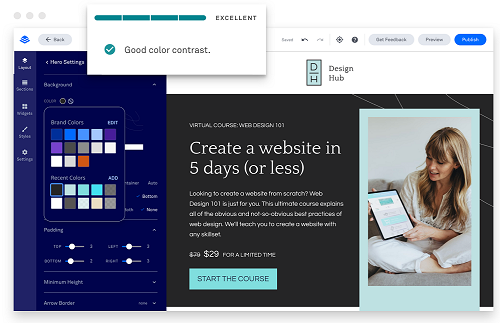Social Media Marketing for Nonprofits
There is a lot of conflicting advice out there for nonprofits engaged on social media platforms. Some say charities need to be doing more to socialise and create a buzzing community of followers, while others are sceptical as to whether the time investment needed to properly manage updates is worth the benefits.
The voices advocating social media are probably louder, with a quick search producing dozens of guides and tips on how to ramp up your organisation's presence on platforms like Facebook, Twitter, YouTube and even Snapchat. The benefits are the same as for any other brand: creating conversations about the issues, raising the profile of the company, gaining a dedicated following and keeping them informed of relevant developments and news.
The theory is of course that a bustling social media community translates into clicks through to your website, sign ups to your email list, and the potential for more donations and support.
However, articles like this one in The Guardian are cropping up, arguing that nonprofits should be restricting their use of social media and instead investing resources into other more effective channels.
Matt Collins points out that while it may sound like an unmissable opportunity to connect with the 1 billion Facebookers and 320 million Tweeters, the figures of who actually sees your posts are significantly lower. A study of entrepreneurs covered by this Telegraph article found that two thirds of the 1000 UK small business owners and directors surveyed said that there was no evidence social media was having a positive effect on business.
Posts on Facebook may only reach around 2.6% of the charity's following, whereas tweets generally reach around 10% of followers. This may sound better, but the average click-through rate for tweeted links is only 1.6%. These kinds of figures indicate that very few people will see your post, even if they are already following your brand, and even fewer will click onto your website through the social media platform.
The argument is, I suppose, that people are on these sites to socialise, and prefer to use Google for searching information.
Collins advises to invest more time on SEO, increasing visibility through GoogleAdwords and commonly-searched terms, and making use of the extensive email databases of interested individuals.
He summarises:
'It’s time to step away from the belief that charities have to be on social media and need to invest in it. It’s not the best marketing tool we have. Let’s look at the data, and focus our limited resources on what we can prove works.'
On the opposite side of the debate, there are many who vehemently urge nonprofits to keep up with modern methods of technological engagement, and to be strategic about what they share.
Chara Odhner at charity:water points to an issue with how nonprofits are handling their communications:
‘The most powerful thing about social media is something many companies and organizations often forget: It’s social.’
She adds that organisations are not getting the engagement which translates into the support that they might, and instead are ineffective in their strategies and ‘use social media as a broadcasting platform.’
A HubSpot survey in 2014 investigated the social media marketing habits of over 9000 small to medium-sized nonprofits in the US and Canada. The results showed that nonprofits are catching up reasonably quickly to the potential of social marketing, but still show that the nonprofit sector lags behind for-profit in the levels of social communication.
In terms of time dedicated to social media, 38% of the nonprofits surveyed were spending 1-2 hours a week, compared to the 43% of for-profit small businesses who spend over 6 hours a week communicating on the platforms (VerticalResponse survey, 2012).
The most alarming statistic of the survey by far was that 67% of the businesses had no social media marketing strategy, policies,or goals in place. So, while a large portion of nonprofits are embracing some social platforms, they are not making formal plans or being intentional about how their online updates and content feeds into their overall communication strategy.
This seems doomed to be ineffective, and might well be a waste of limited resources. Half-hearted, disorganised social media engagement just doesn't cut it, and it might be worth setting targets and planning just a couple of platforms to make sure you are generating the maximum traffic for your time.
The study showed that 44% had just one person monitoring social media, so time and resources are of the essence. It also emerged that 53% were not measuring the outcome of their online social activity.
On a positive note, 48% of the companies rated social media marketing as 'Very Valuable', which shows recognition of engaging a community is growing. 98% of the nonprofits use Facebook, with a massive 80% saying Facebook is their primary focus for social media.
More generally, the survey found that sharing news about the organisation, sharing information about the cause, and raising brand recognition are the top three goals of nonprofits' social media efforts. In fourth place came fundraising, which is encouraging, as it indicates brands are understanding social media platforms to be more beneficial when the updates are not limited to appeals.
Content Strategy
As with any strategy or long-term plan, make sure you set goals that are achievable and measurable. For instance, if your aim is to engage with the non-profit online community, set specific targets for the number of posts from other accounts you will share, or for the online campaigns you could tune into.
Analytics can help you gain a better understanding of your current following, so you can shape your content to your demographic.
Bridgett Colling from See3 Communications, a digital agency for nonprofits, outlines a difficulty:
‘A lot of nonprofits say, ‘Well, our audience is the general public,’ but if you think you’re speaking to the general public, you’re probably speaking to nobody.’
She recommends developing ‘audience personas’, which are basically representations of potential supporters based on the characteristics of current donors, volunteers and board members. Some even suggest constructing whole character profiles with names and individual interests, to help you focus your attention on what matters to your audience, and how you can engage them.
With a better idea of your target demographic, you can focus limited resources on being active on the two or three networks where your audience is most active, rather than trying to cover all bases. Facebook is number one in this sector, with an overwhelming majority of non-profit communicators rating it as their top platform, followed by Twitter and YouTube.
What to share is crucial to improve your chances of successful engagement. One option is to take a storytelling approach, sharing the experiences and perspectives of those within your organisation and of people you work with. The public is more likely to respond actively when they feel a personal, one-on-one connection than if they see broad mission statements and appeals.
Kivi Leroux Miller, a specialist in non-profit marketing, suggests that your content be motivated by questions like ‘What problems do people have in their own lives when trying to live out the values they share with your organisation? What tips or tools can you give them that make their lives easier as they try to be a better environmentalist, animal lover, parent, etc.?’
It is widely agreed that content should be balanced, with posts serving a mixture of purposes. Broadly speaking, you need to make sure your social media output is more varied than just appeals to donors.
Some propose the ‘Rule of Thirds’, dividing content evenly between posts about your organisation and appeals, curated content of interest, and conversation-generating material. Others, like blogger Steven Shattuck, suggest a system based on the three A’s: Appreciation, Advocacy, Appeals.
If each of these takes up a third of your updates, he says, then you can create a strategy that recognises supporters, donors and volunteers, acts as a voice for other nonprofits, and asks for action and financial support.
It seems to me that social media can be valuable in achieving specific goals, but it must be used wisely and as part of a larger strategy of communication. It has the potential to reach a wide range of people, and shared posts can quickly multiply the networks that become aware of your brand. But approach with caution.
Naomi
is an English graduate with an itch to write. Her free time is spent blogging,
reading feminist writing, cycling, cooking and managing her food Instagram
account. Her not-so secret talent is the ability to nap anywhere. Follow her @Songbird_Naomi
Contact
us on Twitter,
on Facebook, or
leave your comments below. To find out about social media training or
management why not take a look at our website for more info: TheSMFGroup.com
Social Media Marketing for Nonprofits
 Reviewed by Unknown
on
Wednesday, August 31, 2016
Rating:
Reviewed by Unknown
on
Wednesday, August 31, 2016
Rating:
 Reviewed by Unknown
on
Wednesday, August 31, 2016
Rating:
Reviewed by Unknown
on
Wednesday, August 31, 2016
Rating:
















 Entrepreneur, international speaker on Social Media Marketing. First one in the UK to write and speak in conferences about Twitter as a marketing tool. Consultant to Corporate Companies, Government Organizations, Marketing Managers and Business Owners.
Entrepreneur, international speaker on Social Media Marketing. First one in the UK to write and speak in conferences about Twitter as a marketing tool. Consultant to Corporate Companies, Government Organizations, Marketing Managers and Business Owners. Aspiring novelist with a passion for fantasy and crime thrillers. He hopes to one day drop that 'aspiring' prefix. He started as a writer and soon after he was made Executive Editor and Manager of the team at Social Songbird. A position he held for 5 years.
Aspiring novelist with a passion for fantasy and crime thrillers. He hopes to one day drop that 'aspiring' prefix. He started as a writer and soon after he was made Executive Editor and Manager of the team at Social Songbird. A position he held for 5 years. Musician, audio technician, professional tutor and a Cambridge university English student. Interested in writing, politics and obsessed with reading.
Musician, audio technician, professional tutor and a Cambridge university English student. Interested in writing, politics and obsessed with reading. Recently graduated with a BA in English Literature from the University of Exeter, and he is about to study an MA in Journalism at the University of Sheffield. He is an aspiring journalist and novelist; in his free time he enjoys playing chess, listening to music and taking long walks through nature.
Recently graduated with a BA in English Literature from the University of Exeter, and he is about to study an MA in Journalism at the University of Sheffield. He is an aspiring journalist and novelist; in his free time he enjoys playing chess, listening to music and taking long walks through nature. Lucy is an undergraduate BSc Politics and International Relations student at the London School of Economics and Political Science.
Lucy is an undergraduate BSc Politics and International Relations student at the London School of Economics and Political Science. Anna Coopey is a 4th year UG student in Classics at the University of St Andrews in Scotland. She is a keen writer and researcher on a number of topics, varying from Modern Greek literature to revolutionary theory.
Anna Coopey is a 4th year UG student in Classics at the University of St Andrews in Scotland. She is a keen writer and researcher on a number of topics, varying from Modern Greek literature to revolutionary theory.
